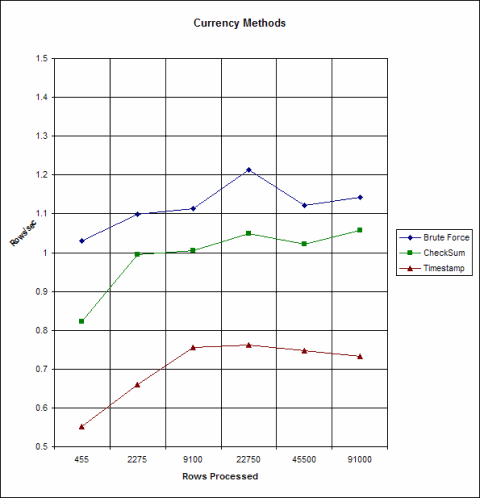Thanks for visiting my blog!

Url: http://wildermuth.com/viewrant.aspx?id=2053
Recently I posted about Timestamps and CommandBuilders and I got a well informed reply by Luciano Evaristo Guerche concerning a related approach of using BINARY_CHECKSUM in SQL Server to do the same thing. I think Luciano’s response means to say that if you can’t use Timestamp’s in the database (like you don’t have control over the schema) then BINARY_CHECKSUM is an improvement over the brute force concurrency that CommandBuilders do by default.
I thought Luciano was right, but I wanted to prove it out. I ran some tests using a Typed DataSet and the Northwind Customer table:
- I changed all 91 records of the customer table by changing a single field (Address).
- I updated the table with the brute force method, the BINARY_CHECKSUM method and the timestamp method.
- I ran it in batches of iterations to get some scale. I changed the entire table in each batch. I ran it in batches of 5, 25, 100, 250, 500 and 1,000 iterations.
In general the results were what I thought. The brute force performed worst, the BINARY_CHECKSUM was a performance boost, but not to a great extent; and the timestamp showed considerable improvement. Here is a chart of my results. The number of rows updated corresponds ot the batches (e.g. 5 iterations x 91 rows = 455, etc.) and I have calculated the row/second response time from each result:

Let me know if you have any questions…
